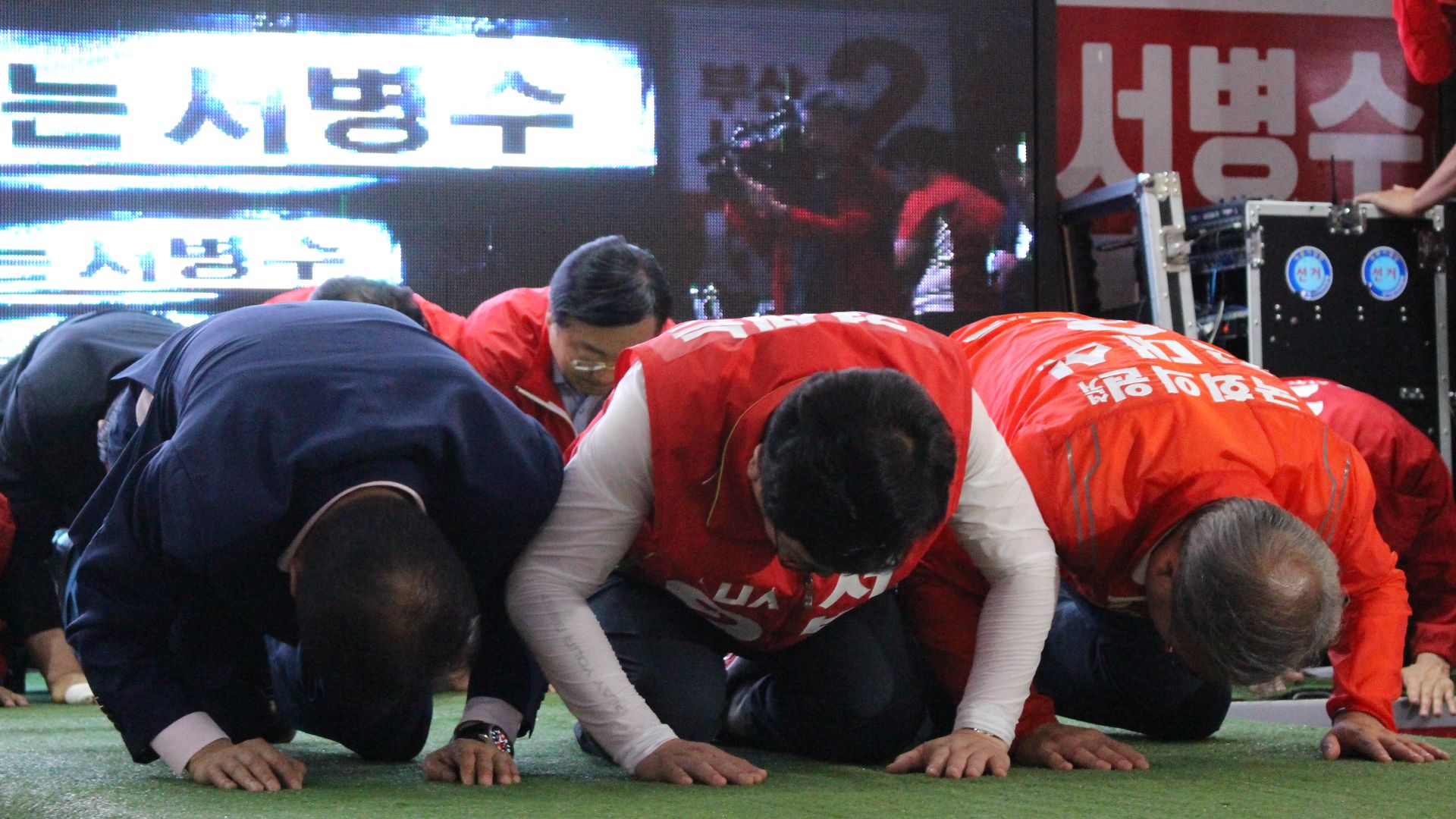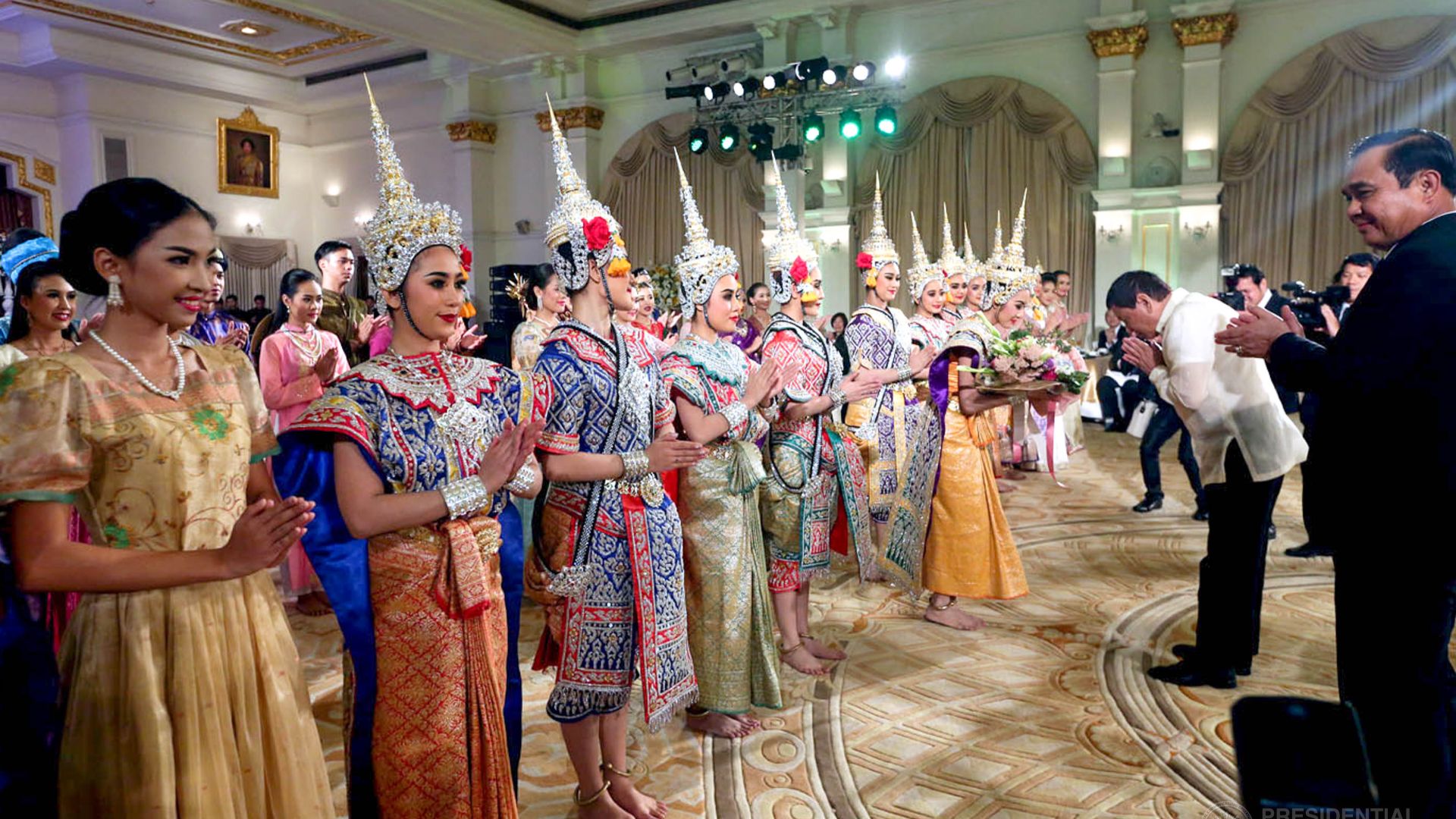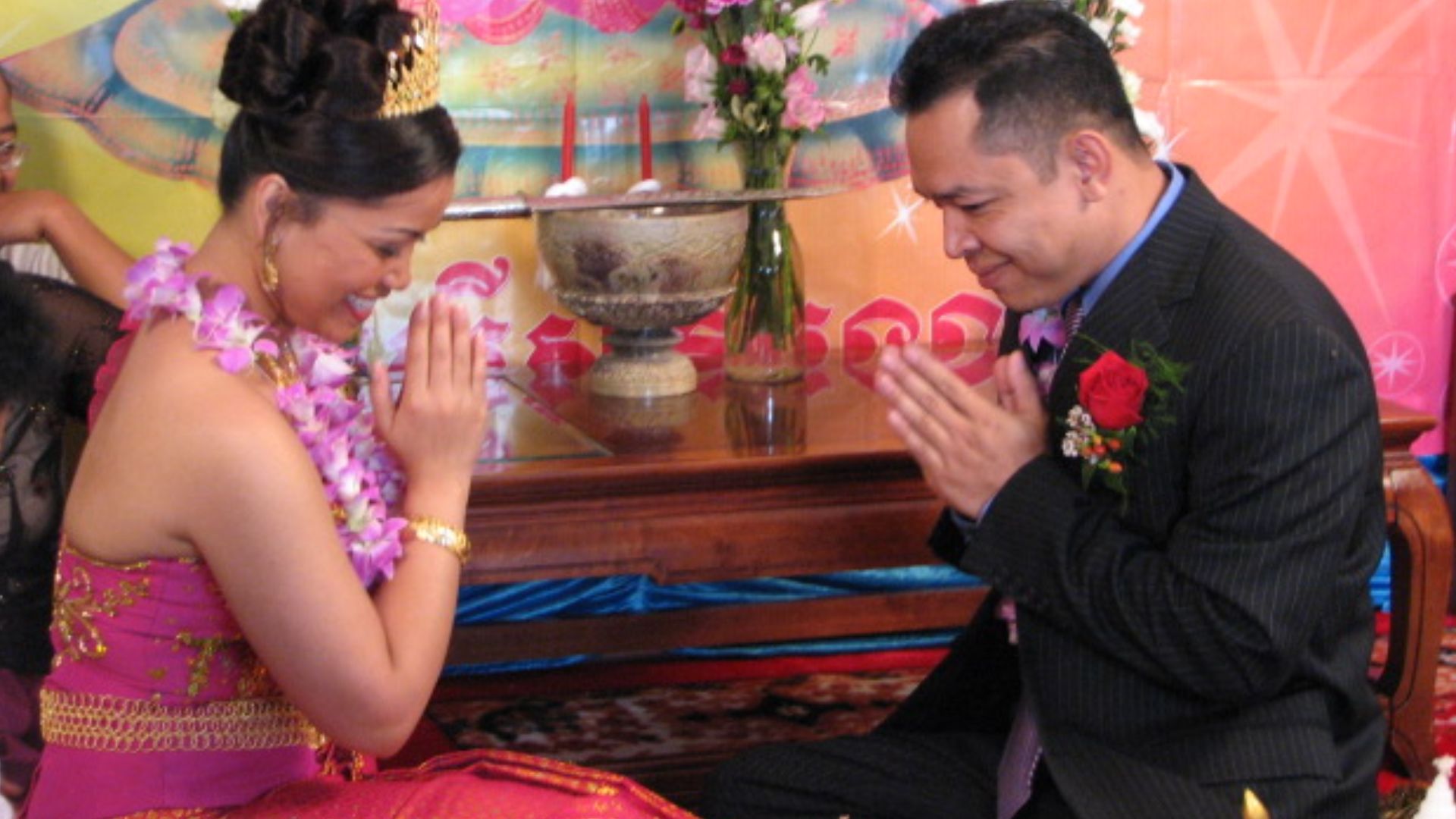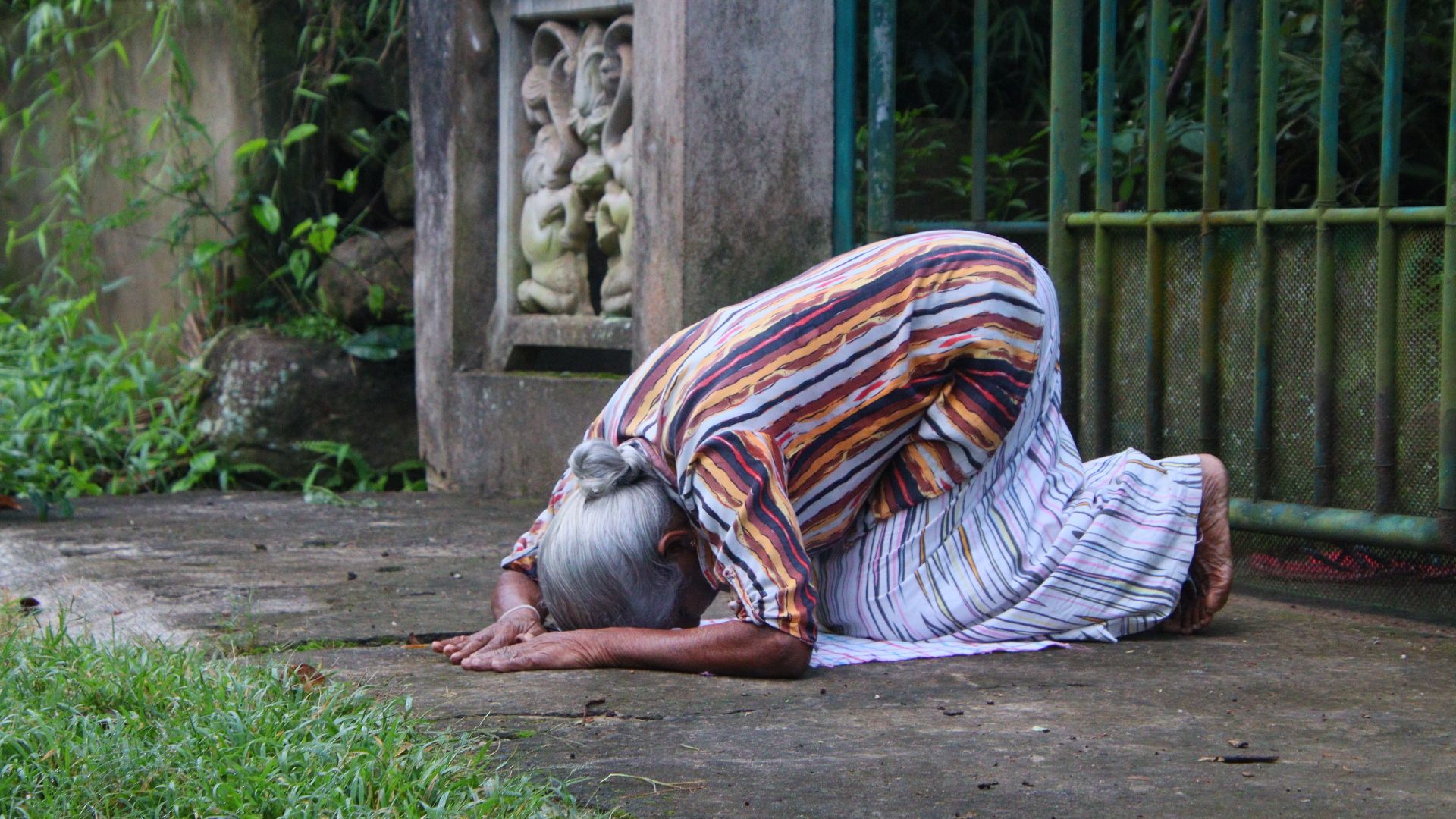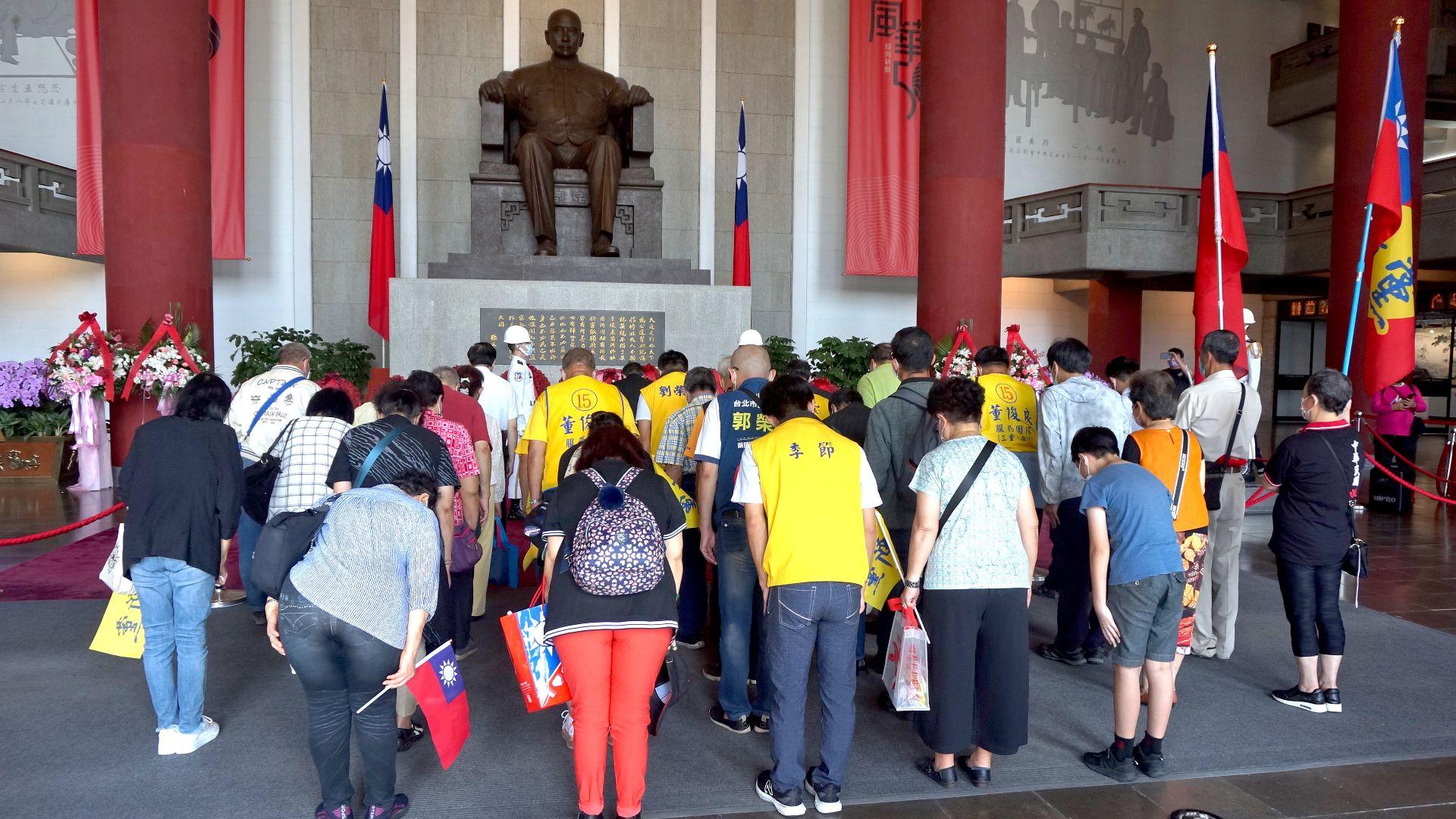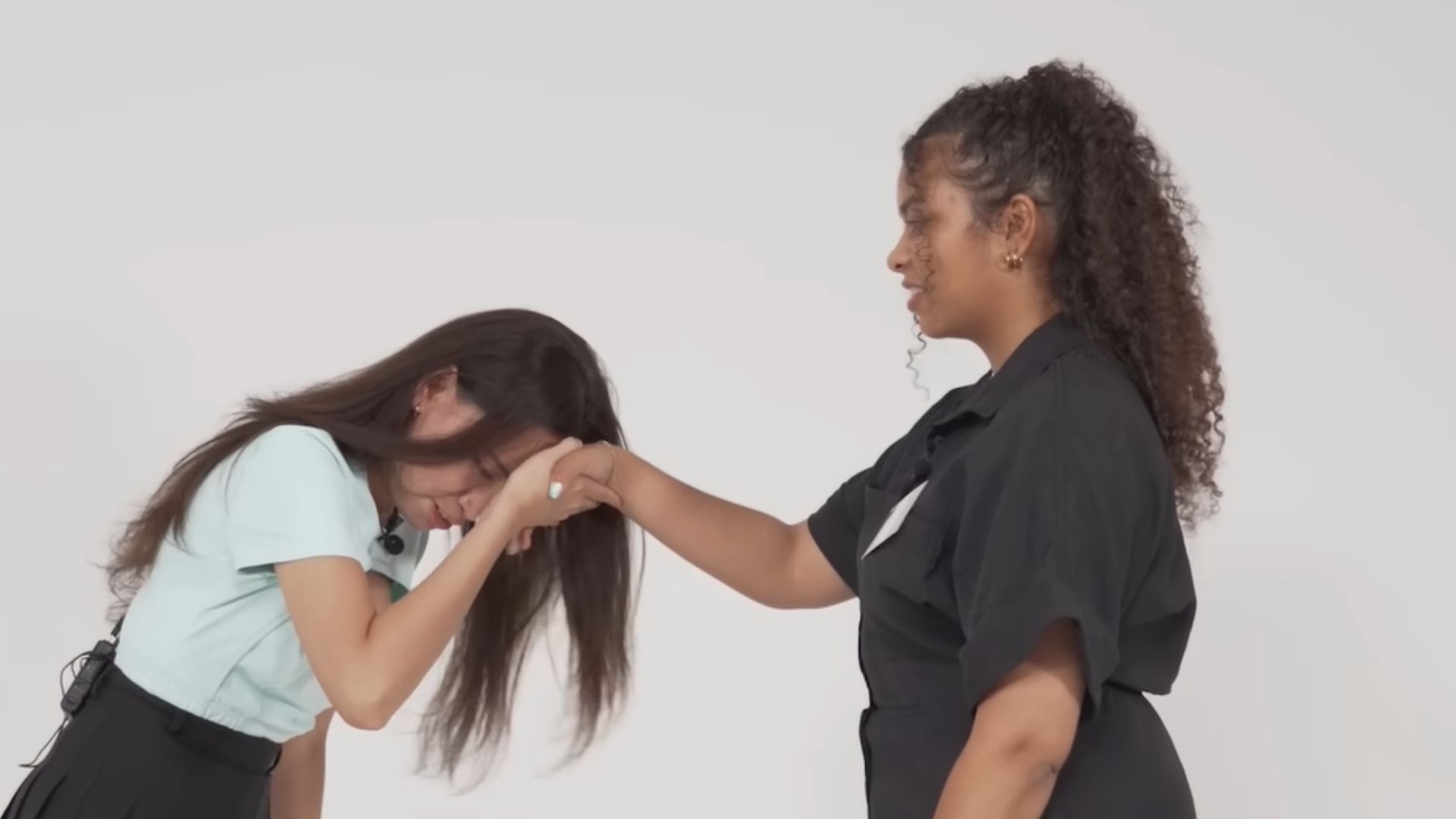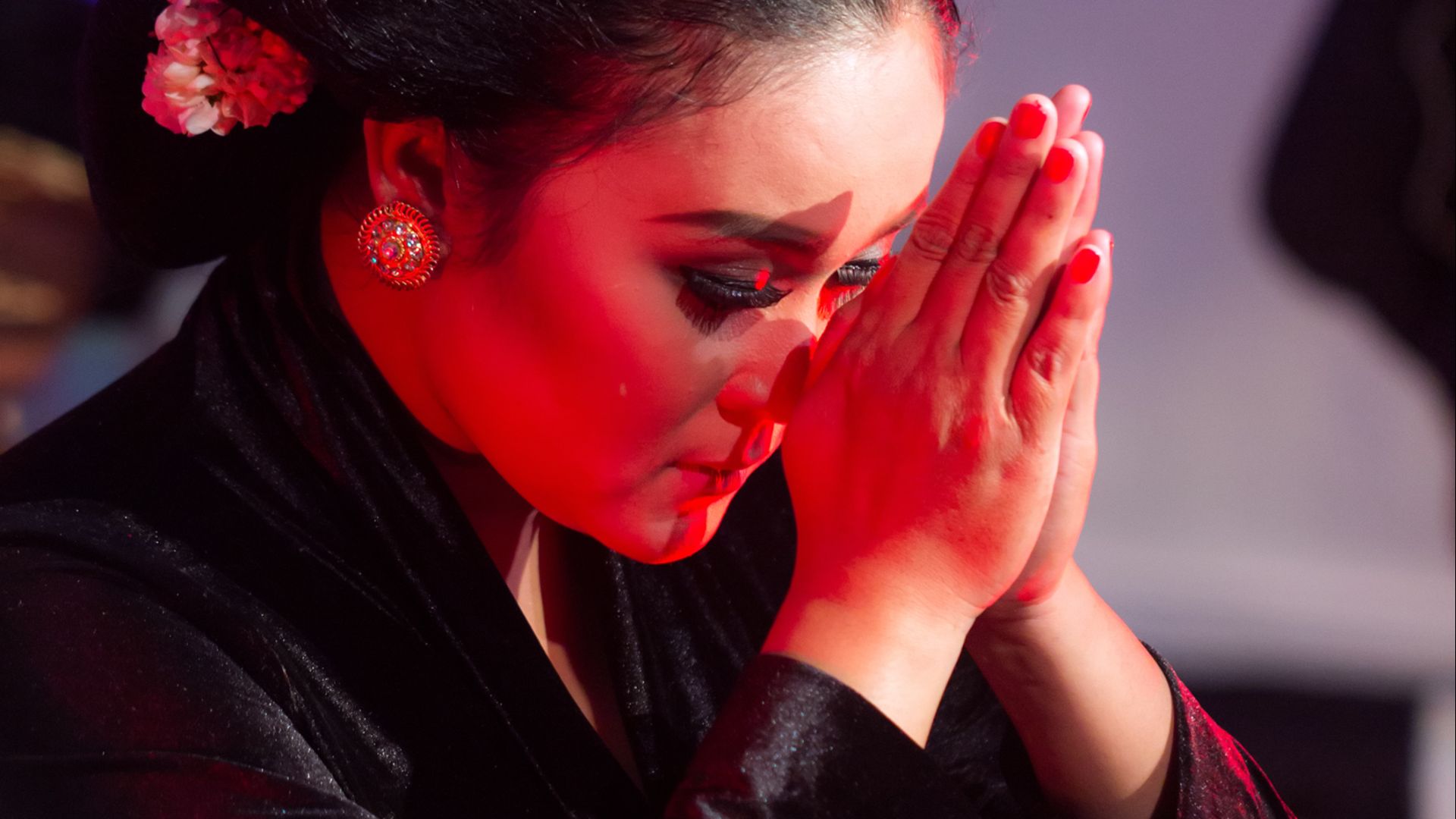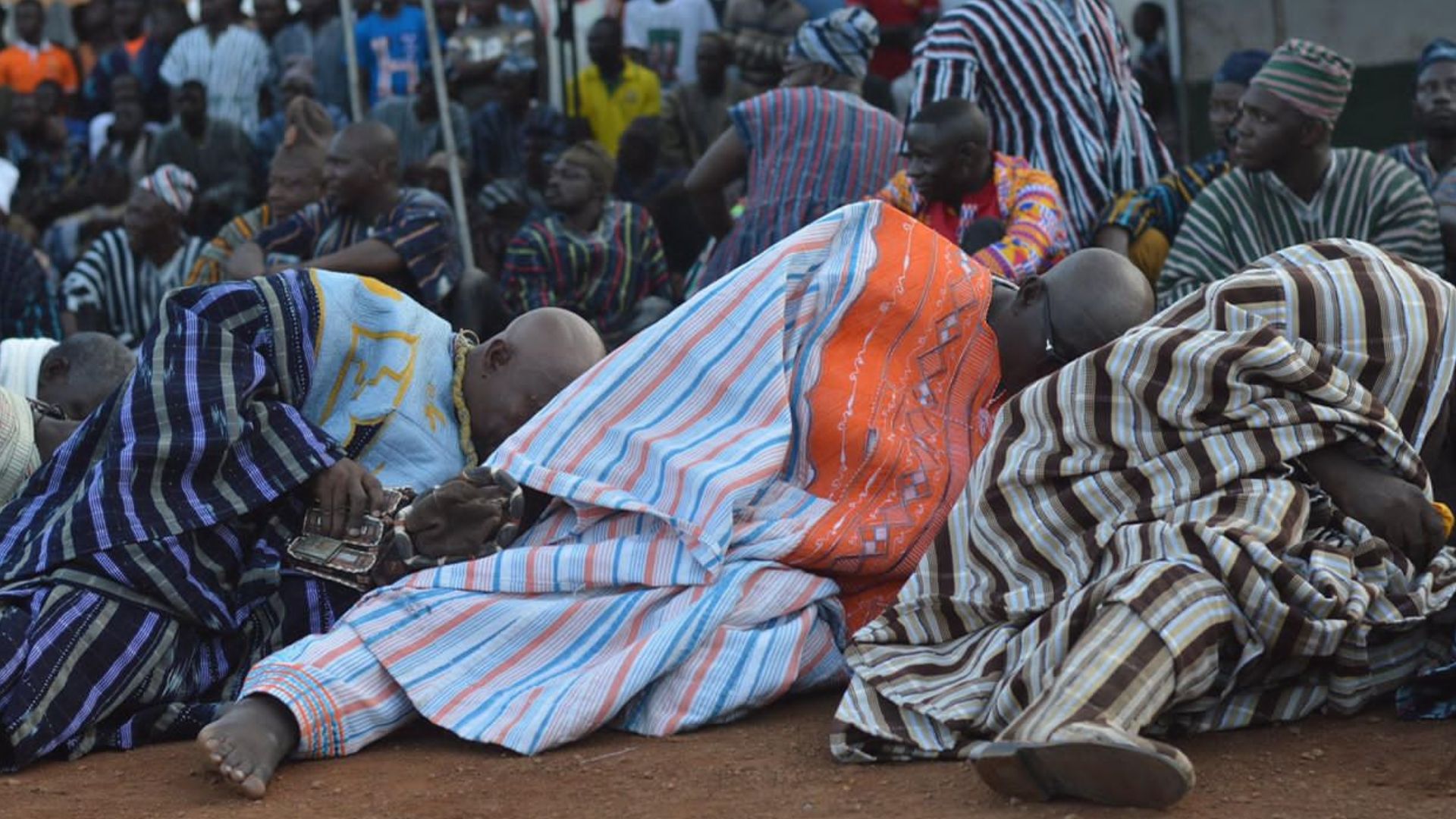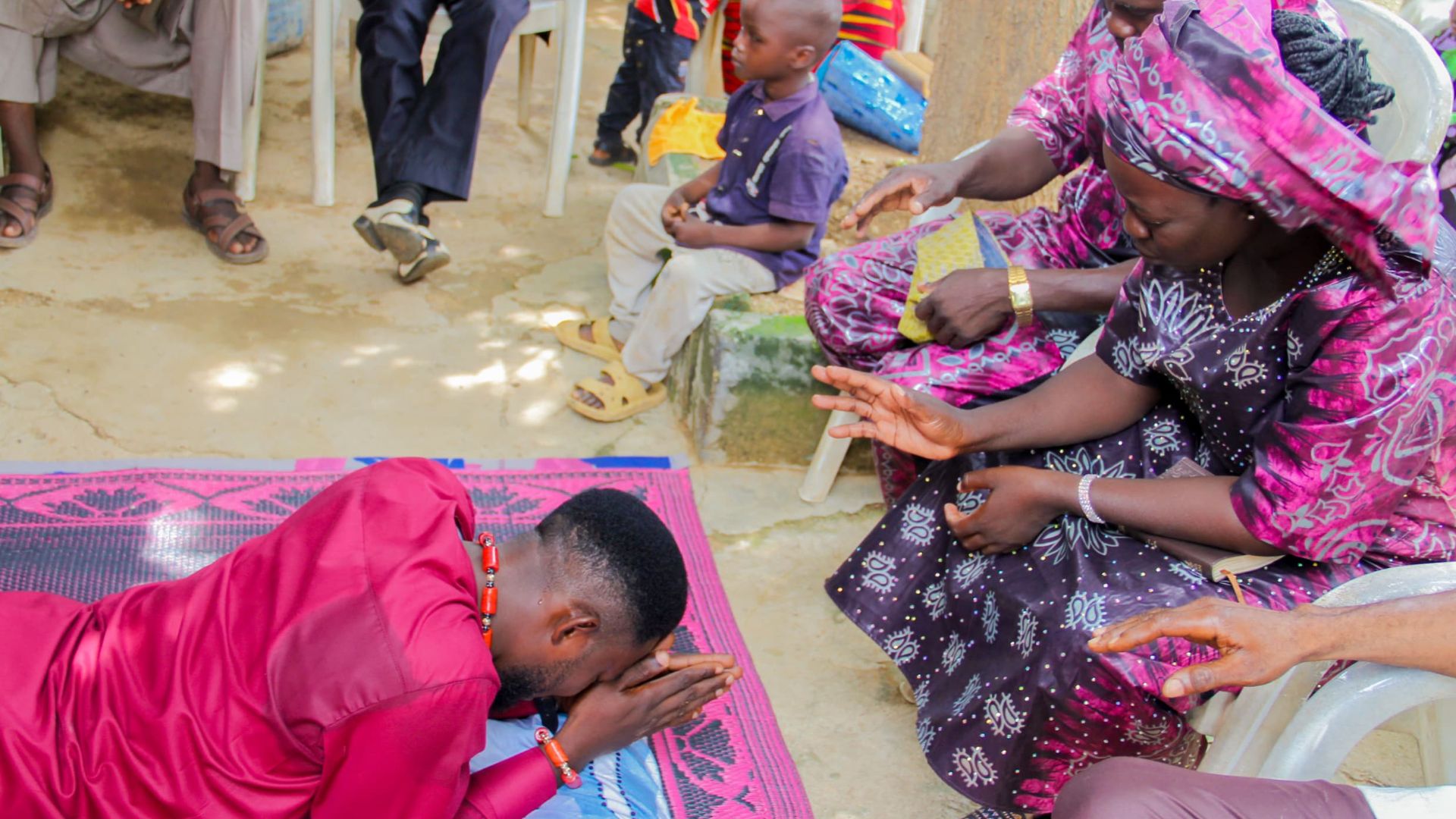Respect Starts With A Bow
Think a handshake seals the deal? Not everywhere. In some parts of the world, bowing is practically a full-body language. Bowing too low will make you look dramatic. Bowing too high might seem rude. The sweet spot? It’s different in every country. So, let’s take a look at 20 countries where bowing is a respectful language of its own, rich in tradition, and surprisingly precise.
1. Japan
Imagine stepping into a room and being greeted with a silent, synchronized dip of the head. In Japan, the whole society flows with a rhythm of respectful inclines, where how deep and how long you bow tells its own story.
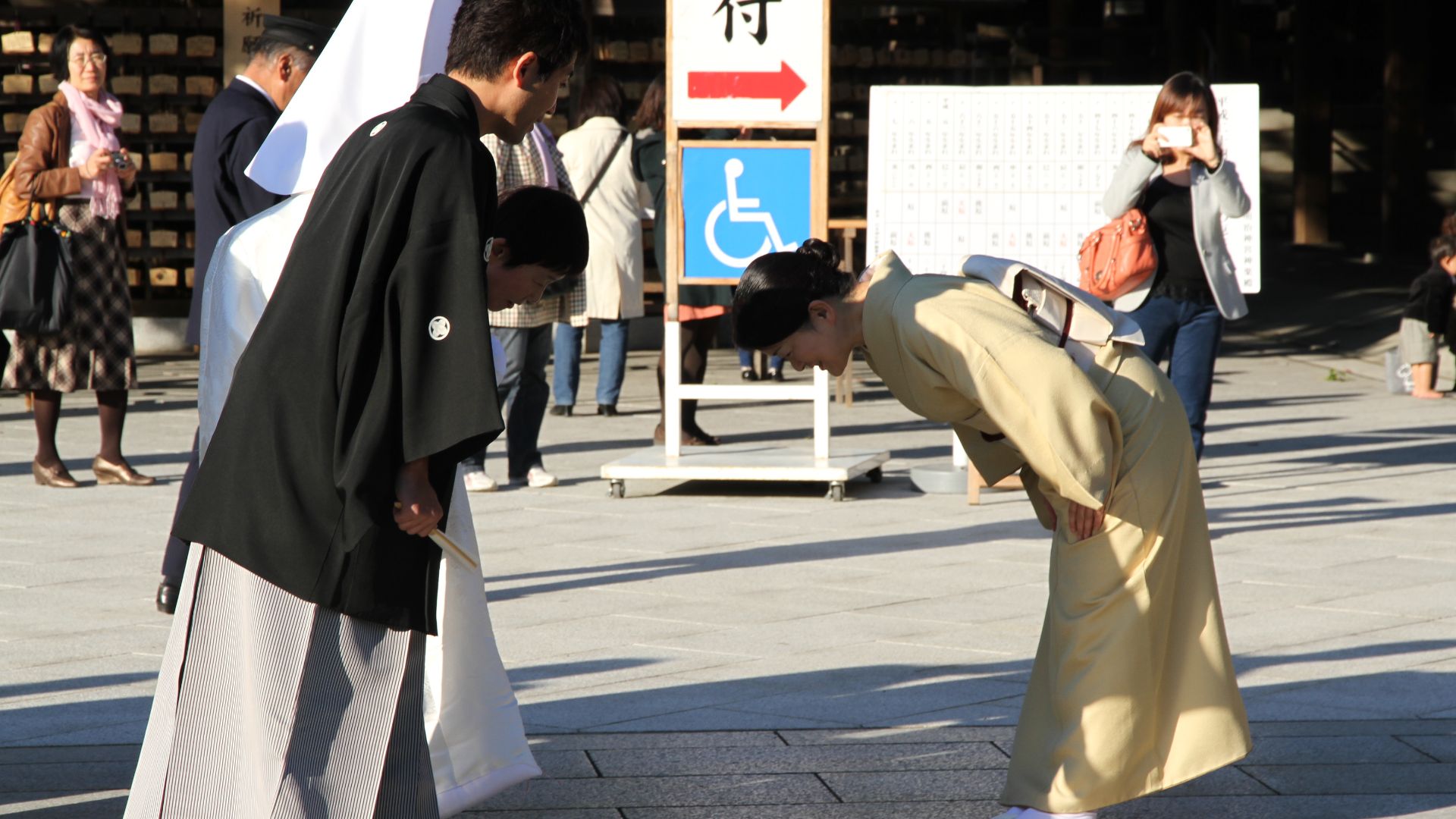 Maya-Anaïs Yataghène from Paris, France on Wikimedia
Maya-Anaïs Yataghène from Paris, France on Wikimedia
2. South Korea
There’s a social dance happening in every Korean interaction, and the bow is at the center of it. You don’t just say hello—you acknowledge someone’s age, status, and relationship with you in one smooth motion. And if you’re the junior in the room? You always go first.
3. Thailand
Fold your hands and bow slightly: you’ve just performed the wai. This iconic Thai greeting changes depending on the receiver’s status—deeper for monks or elders, lighter for friends. Even young children are taught the wai early on, blending Buddhism and tradition into daily interactions.
4. Vietnam
The Vietnamese bow is quiet and often subtle, but don’t let that fool you. It’s full of reverence, especially when directed toward elders, teachers, or ancestors. Walk into a family home during the Lunar New Year, and you’ll see children bowing to parents in exchange for well-wishes.
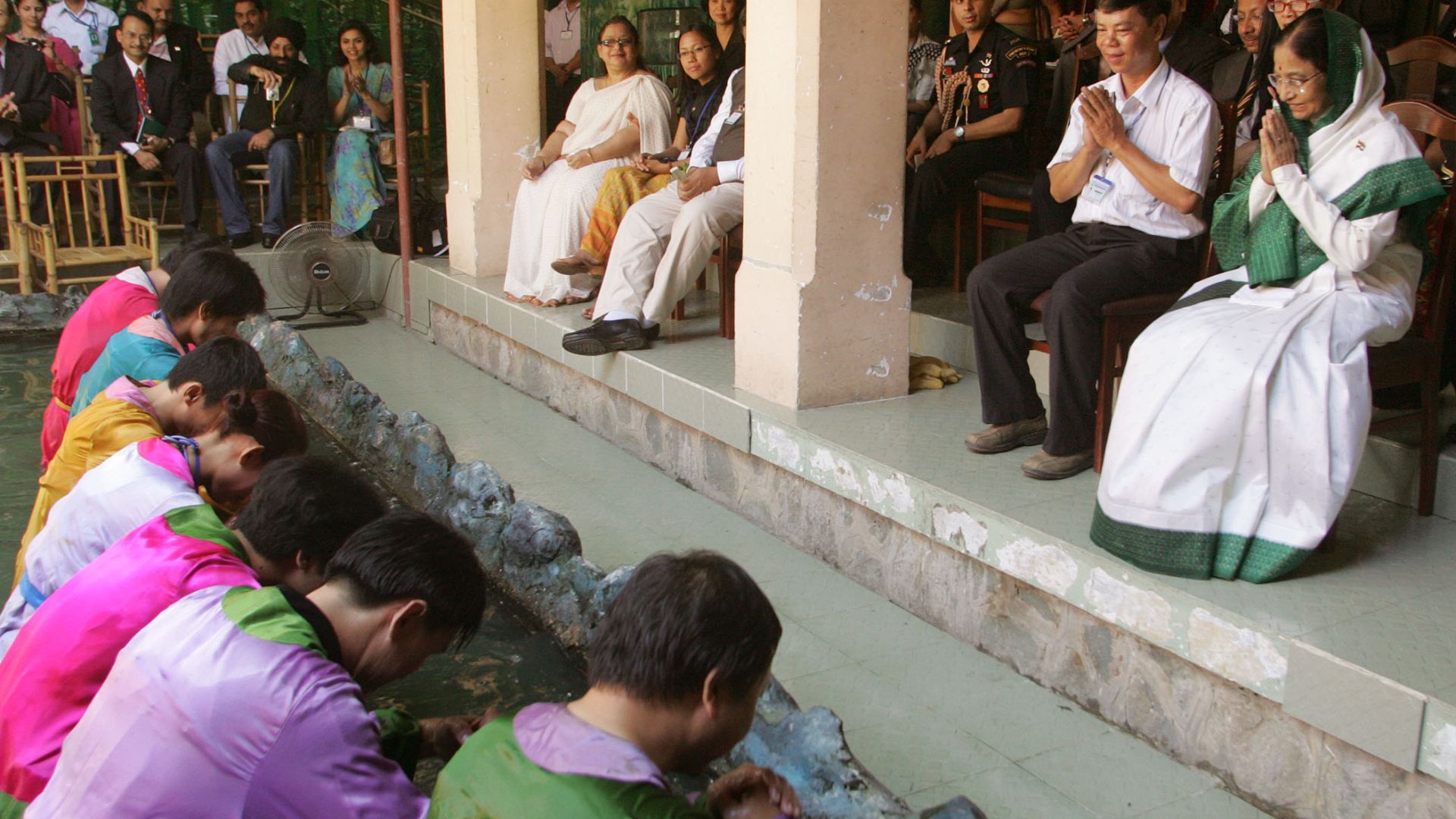 President's Secretariat on Wikimedia
President's Secretariat on Wikimedia
5. India
Say “namaste,” and your hands come together, your head dips slightly, and suddenly, you’re in sync with a tradition that’s been around longer than most empires. Some people add a touch to the feet for extra reverence.
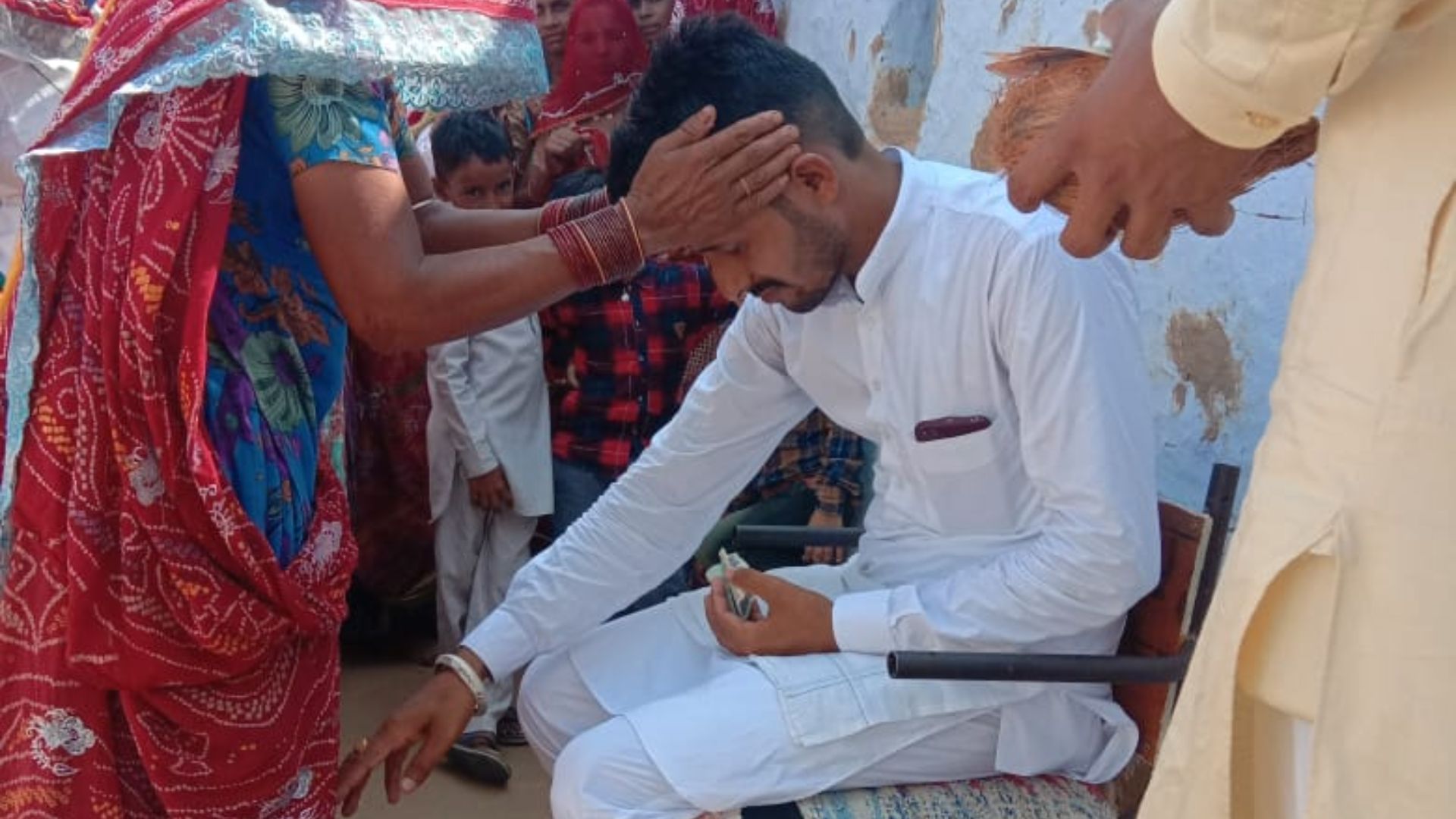 Jaishree.lunkaransar on Wikimedia
Jaishree.lunkaransar on Wikimedia
6. Cambodia
Match a bow with your palms together, and you’ve just made a sampeah. This Cambodian gesture reflects Buddhism’s emphasis on humility and reverence. Gesture depth signals respect—palms near forehead for monks and at chest level for peers.
7. Laos
The nop in Laos is close cousins with the Thai wai and Cambodian sampeah, but it has its own peaceful flavor. It’s calm, measured, and tied to deep Buddhist traditions. You might see villagers greeting a guest with it in the morning, then again at temples during offerings.
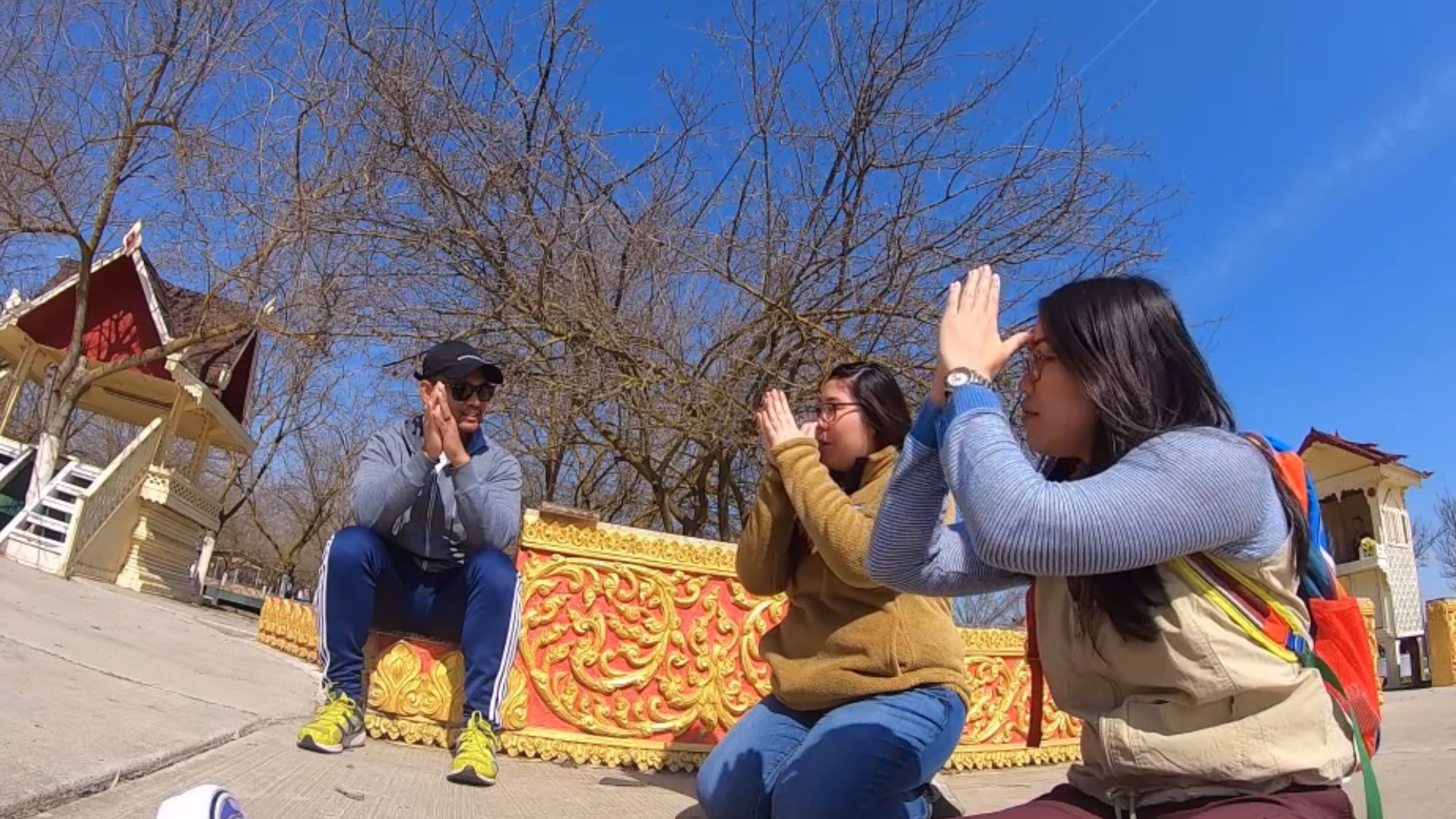 Where to position hands when greeting in the Lao culture by KhammanyOnEarth
Where to position hands when greeting in the Lao culture by KhammanyOnEarth
8. Myanmar
Before offering a gift or addressing a teacher, many in Myanmar slightly bow while seated or standing. It’s a quiet, graceful act rooted in Theravada Buddhist values. Bowing to Buddha statues, monks, and family elders reflects devotion. Ignore it, and you risk appearing careless or rude.
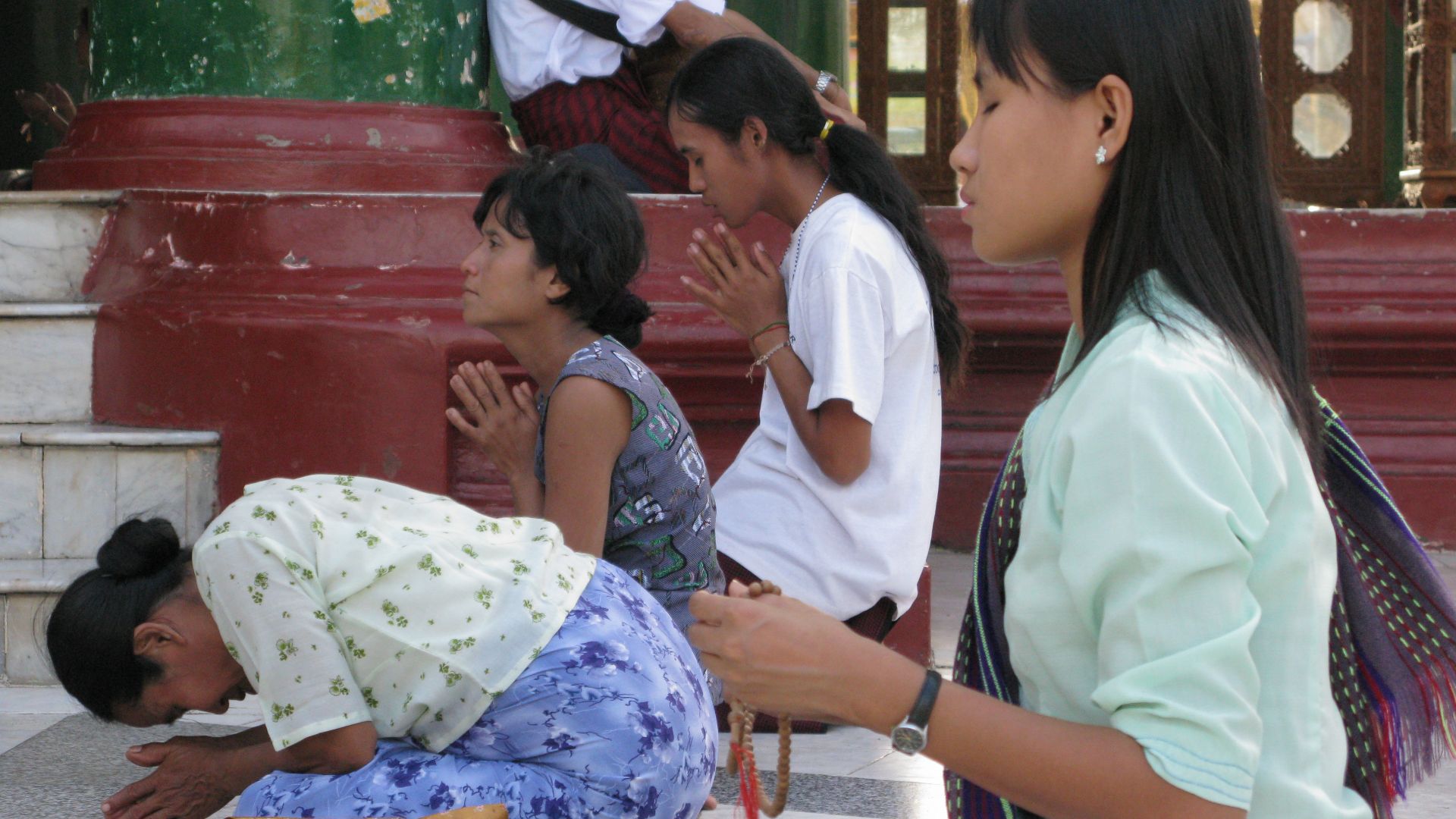 Vyacheslav Argenberg on Wikimedia
Vyacheslav Argenberg on Wikimedia
9. Sri Lanka
Students bow deeply before teachers at the start of school. It’s called Vandana, part of a Buddhist-influenced tradition where respect is shown through posture. Similarly, in homes, younger family members may bow or kneel to elders.
10. Nepal
At temples, expect to see devotees bowing low or touching elders’ feet after joining palms in a namaste. These small bows hold a big meaning, blending Hindu and Buddhist values. That’s how respect for gods and grandparents alike is shown by humble posture and practiced grace.
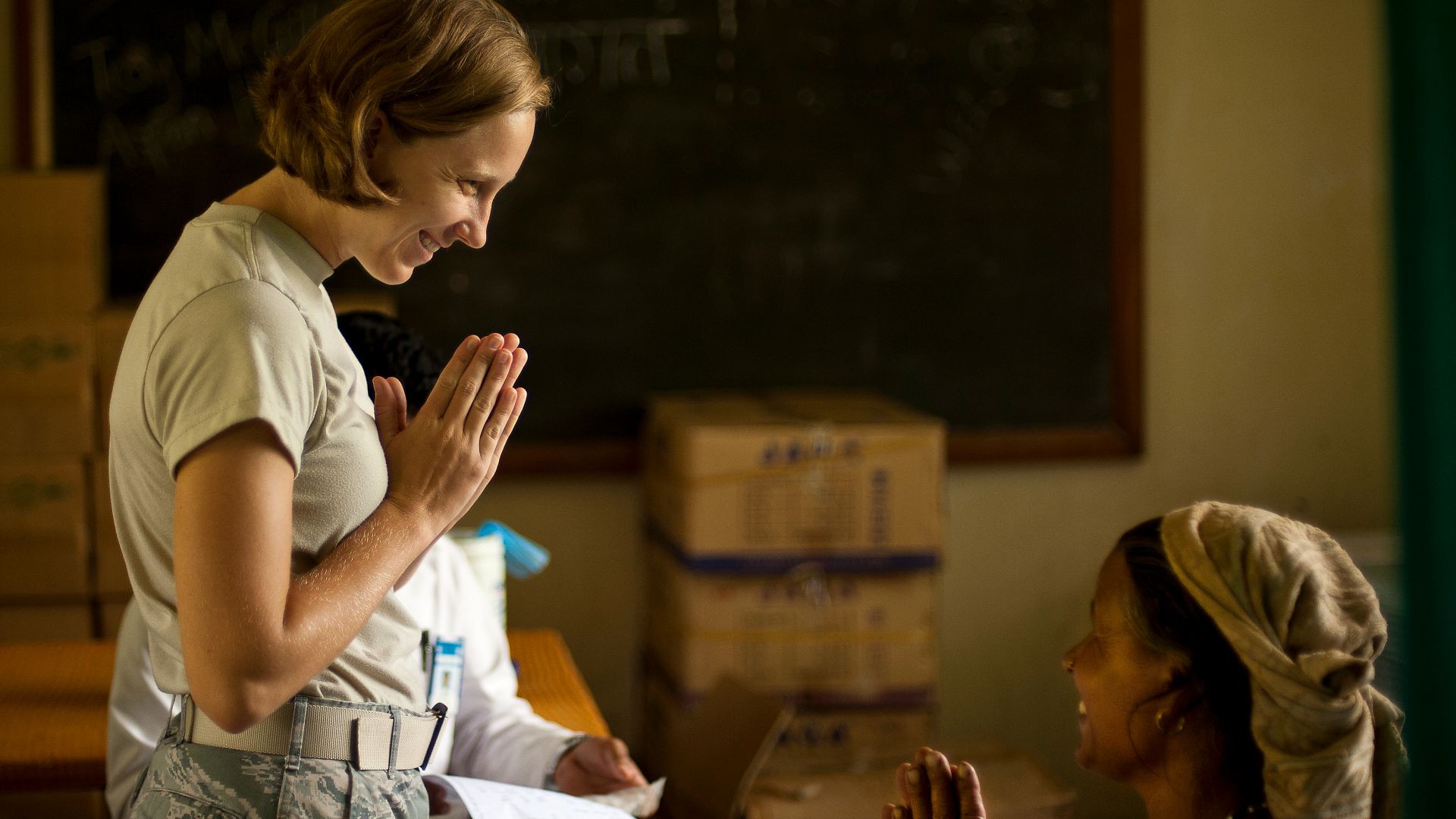 Master Sgt. Jeffrey Allen on Wikimedia
Master Sgt. Jeffrey Allen on Wikimedia
11. Bhutan
Bhutan holds on tightly to its bowing customs. It starts at the temple, where monks and villagers alike bow to show reverence. What makes it special here is its quiet sincerity. In a country that values happiness and balance over hustle, this kind of grace fits like a well-worn robe.
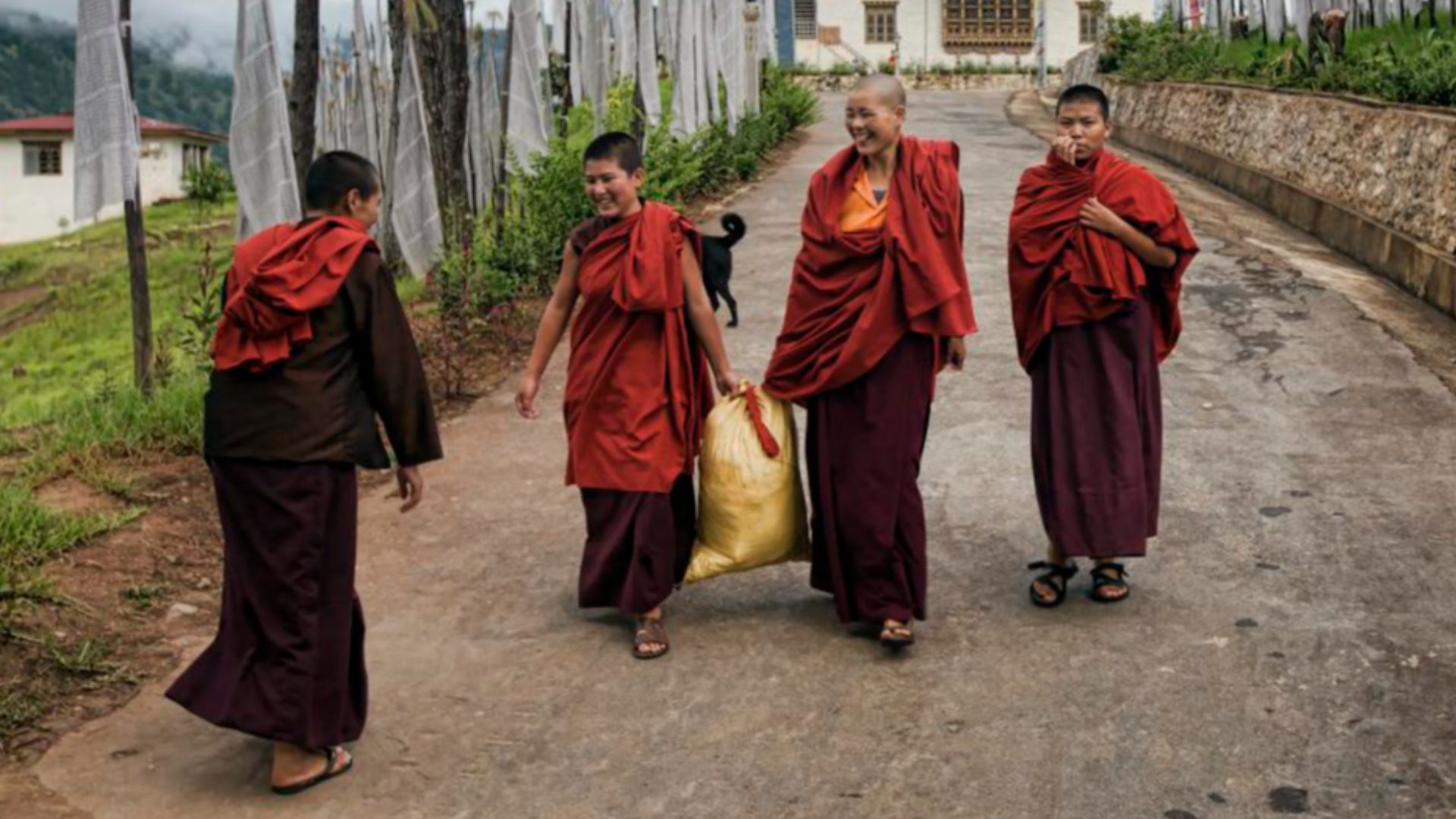 Christopher Michel on Wikimedia
Christopher Michel on Wikimedia
12. China
While replaced by handshakes in modern settings, the bow survives as a sign of deep emotion—especially grief or gratitude. Confucian values shaped its meaning: posture reflects virtue, and virtue still matters in formal Chinese traditions.
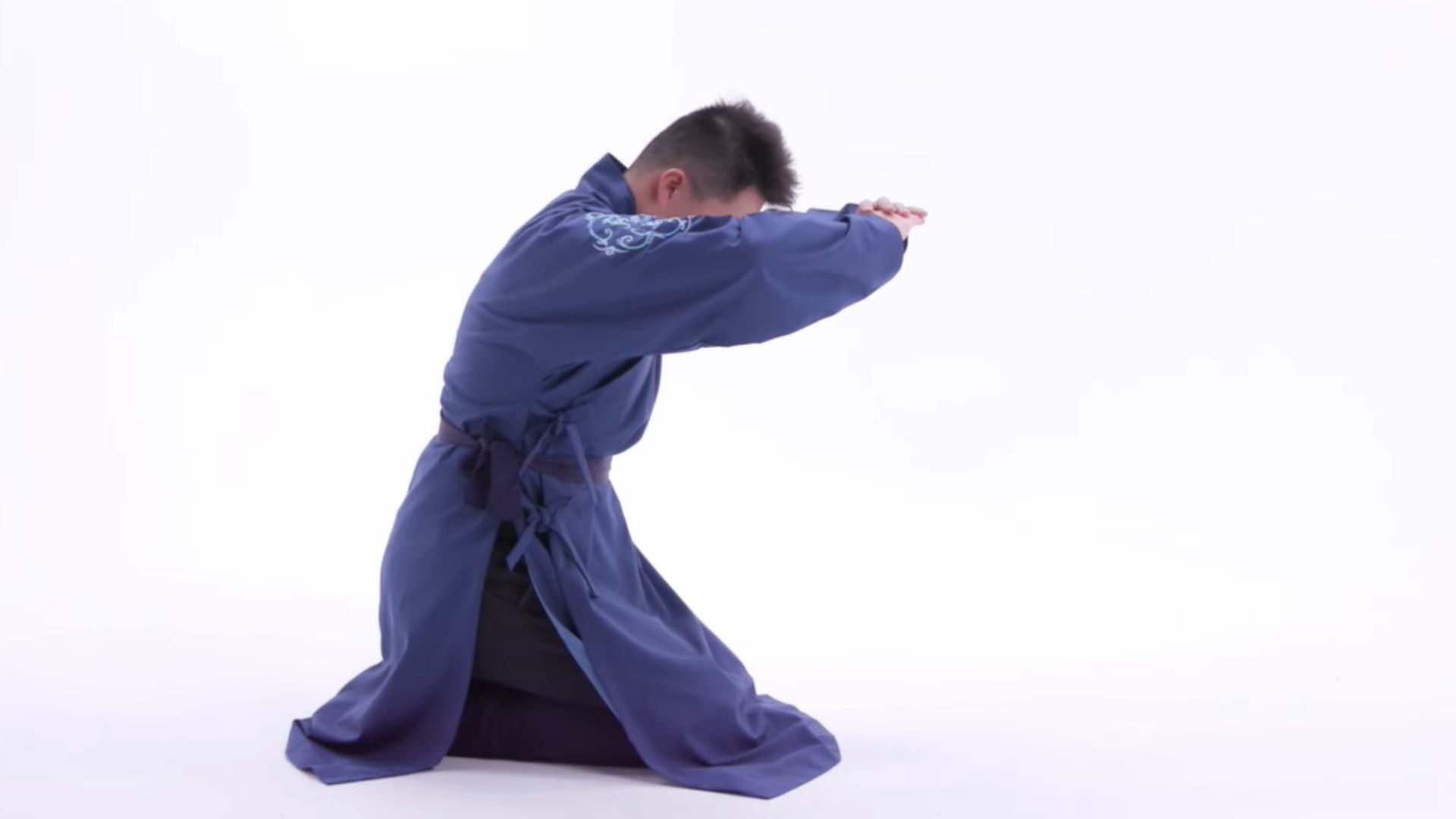 Chinese Custom: how to KOWTOW how to BOW - and when to use them by Five Thousand Years
Chinese Custom: how to KOWTOW how to BOW - and when to use them by Five Thousand Years
13. Taiwan
Here, bowing is practiced in hospitals, schools, and temples. Doctors bow to deceased donors during body donation ceremonies. Students bow to teachers at graduation. These are considered acts of solemnity, signaling collective gratitude and respect.
14. Indonesia
Travel to Java or Bali, and you’ll likely encounter the sembah—a gentle bow paired with palms pressed together. While it’s less visible in urban areas today, the spirit of the bow lives on. It reflects an older Indonesia—one that still values harmony and subtlety.
15. Malaysia
The traditional salam sembah starts with a bow and palms together, reflecting Malay-Muslim cultural fusion. Though handshakes dominate now, this gesture persists in communicating both Islamic courtesy and ancestral respect. Timing, eye contact, and posture all convey social awareness.
16. Mongolia
Tilt forward slightly, hat removed, hands outstretched—this is how Mongolians show respect to elders or guests. Nomadic life taught courtesy through action. Plus, at weddings or Lunar New Year events, expect symbolic bows paired with hada scarves.
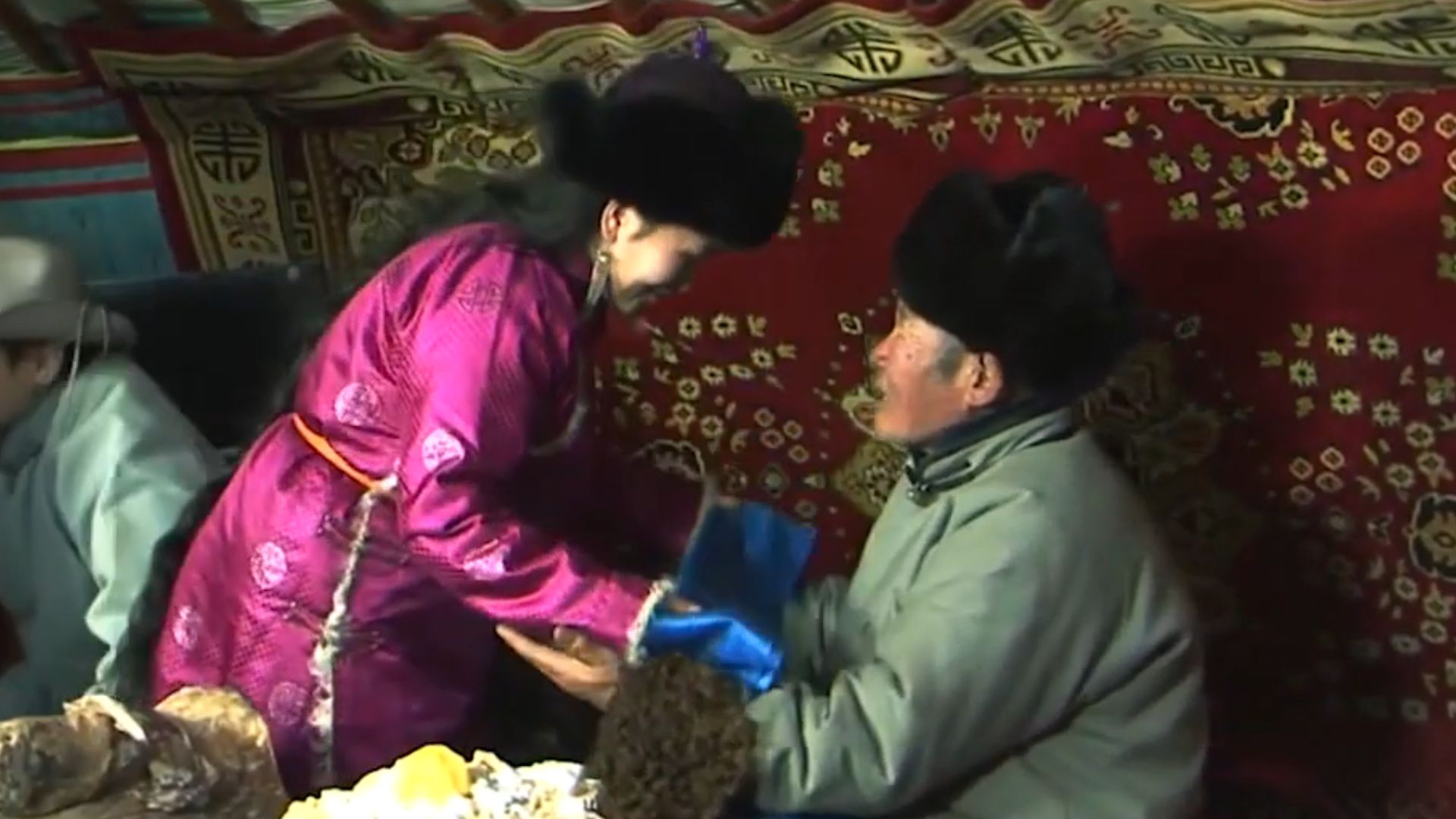 Mongolia’s greeting custom with khadag by Mongolian News Montsame
Mongolia’s greeting custom with khadag by Mongolian News Montsame
17. Bangladesh
Slight bowing accompanies greetings like adab or salaam in Bengali-Muslim homes. The gesture varies by region, sometimes more pronounced in rural or conservative families. Children often bow and touch an elder’s feet, which is a blend of South Asian reverence and Islamic politeness.
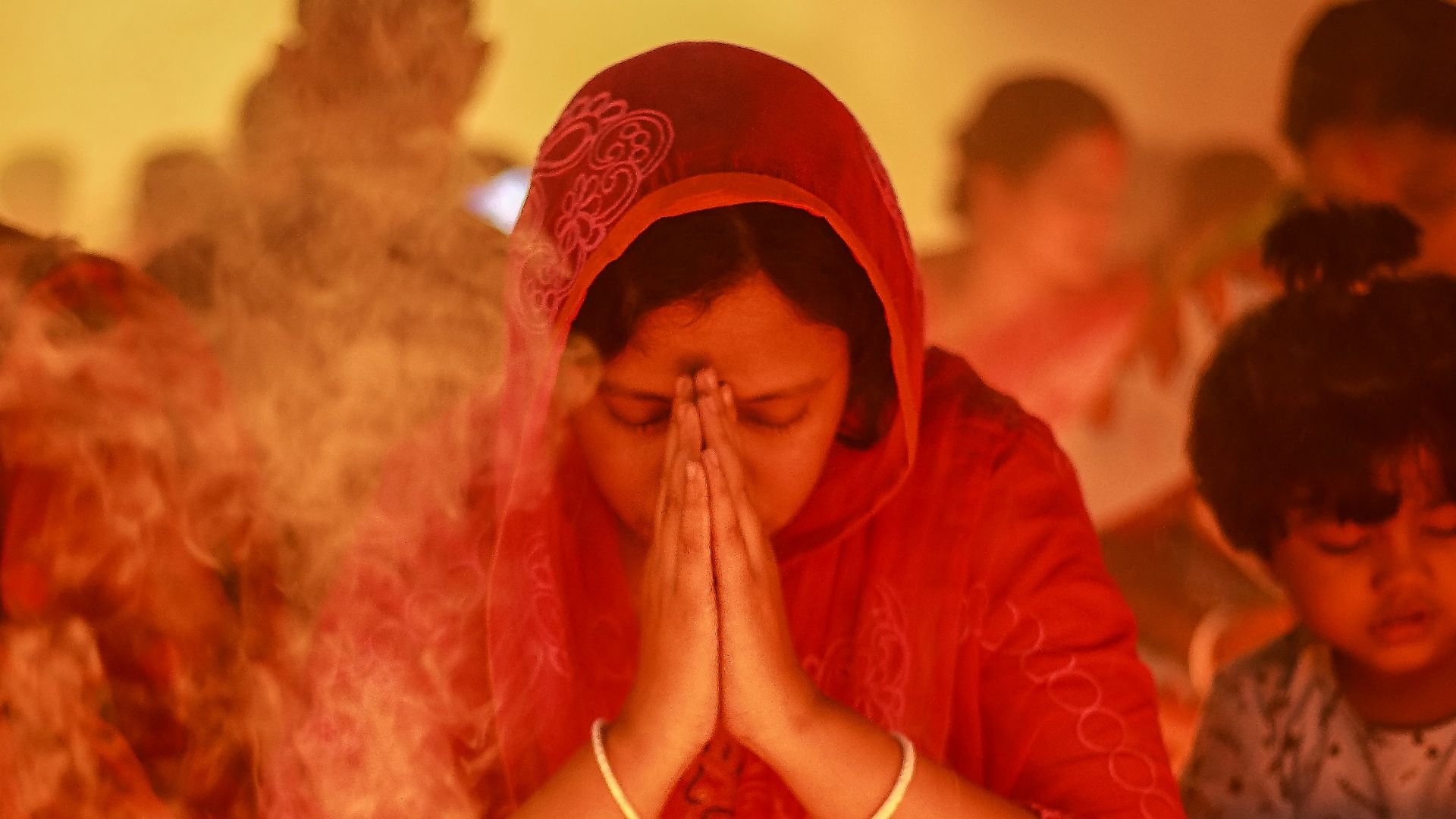 MuhammadAmdadHossain on Wikimedia
MuhammadAmdadHossain on Wikimedia
18. Iran
Here, when someone greets you with salaam, they might lower their head just enough to show regard. It’s part of ta’arof, a ritual of courtesy that turns small bows into graceful negotiations. It’s cultural theater, and you’re both actor and audience in a drama of honor and humility.
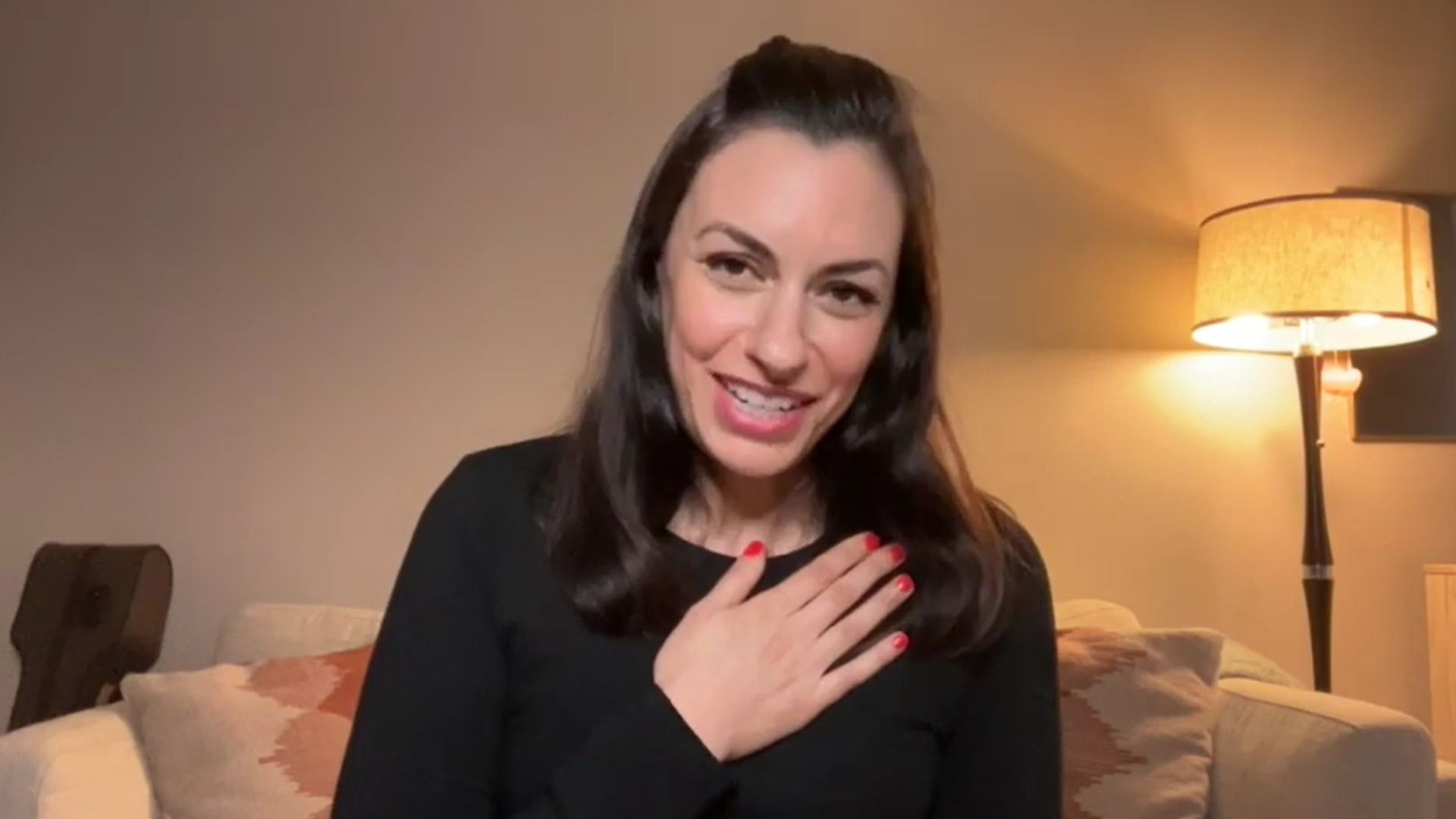 14 Common Gestures in Iranian Culture by My Persian Corner
14 Common Gestures in Iranian Culture by My Persian Corner
19. Ghana
Among the Akan, it’s common to see people bow or lower themselves when speaking to elders. The motion might be a subtle bend or a deeper crouch, but it always comes with intent. And if you skip the gesture altogether? You might as well show up to a drum circle with no rhythm at all.
20. Nigeria
Among the Yoruba in Nigeria, bowing hits the floor. Boys lie flat on their chests, and girls kneel gracefully when greeting elders. And not just during family reunions or weddings—this is part of daily life. Even toddlers are taught the basics early.



